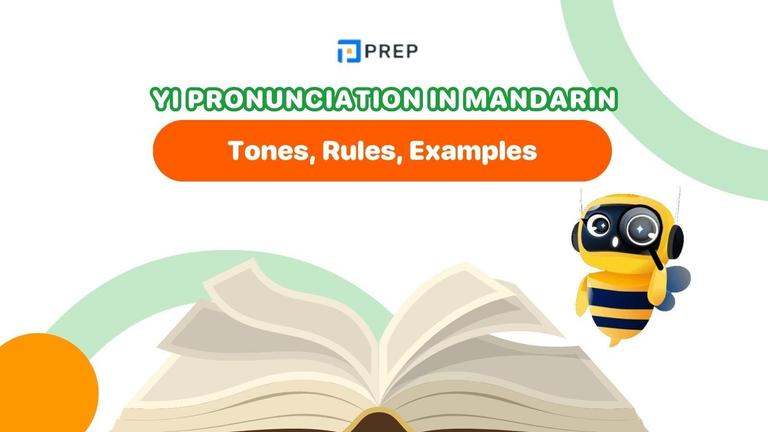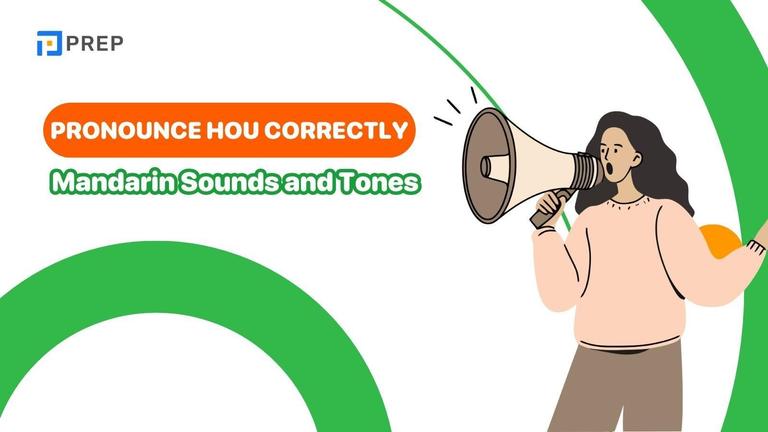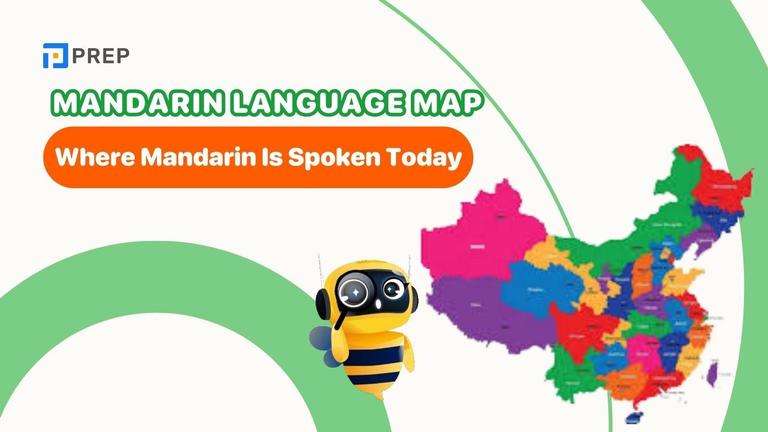Beyond Nǐ Hǎo: 20+ Essential Phrases for Greeting in Chinese Effectively
While "Nǐ hǎo" may be the most recognized Chinese greeting worldwide, relying solely on this basic phrase limits your ability to connect authentically with native speakers. Effective communication in Chinese requires a more nuanced understanding of greetings that accommodate different times of day, social contexts, and relationships. This comprehensive guide covers more than 20 essential phrases and concepts for greeting in Chinese, providing you with a versatile toolkit that goes beyond the basics.
From core greetings to pronunciation guidance, time-specific phrases, natural follow-ups, and crucial cultural context, this article equips you with everything needed to greet others appropriately and confidently in various situations. By mastering these greeting techniques, you'll demonstrate respect for Chinese language and culture while establishing more meaningful connections from the very first interaction.
- I. The Foundation: Mastering the Core "Hellos"
- II. Crucial Context: Pronunciation & Formality for Effective Use
- III. Greeting Throughout the Day: Natural Time-Specific Phrases
- IV. Engaging Further: Common Follow-Ups & First Meetings
- V. Cultural Etiquette: Ensuring Your Greeting in Chinese Land Well
- VI. Clarifying Nuances: Answering Common Questions About Greeting in Chinese
- VII. Putting It All Together: Engaging Respectfully with Your Greeting in Chinese Toolkit
I. The Foundation: Mastering the Core "Hellos"
Before exploring more specific greeting in Chinese, it's important to establish a solid foundation with the most fundamental Chinese greetings that serve as starting points for any interaction.
1. 你好 (Nǐ hǎo): The Universal Basic Greeting in Chinese
The world-famous "Nǐ hǎo" is undoubtedly the most recognized Chinese greeting and provides a reliable starting point for any conversation. Written as 你好, this greeting combines the character for "you" (你) with "good" (好).
The pronunciation follows a specific tone pattern where the first syllable (Nǐ) uses the third tone (falling then rising), while the second syllable (hǎo) also has a third tone. However, when two third tones appear consecutively, the first typically changes to a second tone in actual speech – a phenomenon called tone sandhi. Therefore, "Nǐ hǎo" is actually pronounced more like "Ní hǎo" with a rising second tone followed by a falling-rising third tone.
This universal greeting in Chinese works well in most situations, especially when interacting with peers or strangers. While perfectly acceptable in virtually any context, native speakers may find it slightly formal or stiff when used among close friends or family members, where other greetings (covered later) might feel more natural.
2. 您好 (Nín hǎo): Showing Respect with the Formal "Hello"
When respect and formality are required, 您好 (Nín hǎo) becomes the appropriate greeting choice. This phrase of greeting in Chinese replaces the standard "you" (你/nǐ) with the respectful form (您/nín), creating a more polite variation of the basic hello.
In terms of pronunciation, Nín uses a second tone (rising), followed by hǎo with a third tone (falling-rising). This seemingly small change makes a significant difference in showing proper respect when greeting elders, teachers, supervisors, government officials, or anyone in a position deserving particular deference.
Using Nín hǎo instead of Nǐ hǎo in appropriate situations demonstrates cultural awareness and respect for social hierarchies, making it an essential addition to your greeting repertoire for formal or first-time interactions with those deserving special respect.
II. Crucial Context: Pronunciation & Formality for Effective Use
Understanding how to properly use greeting in Chinese requires more than memorizing phrases – it demands mastery of pronunciation and awareness of formality levels. These two concepts are just as crucial as the greeting words themselves for effective communication.
-
Pinyin & Tones: The Key to Being Understood
Pinyin serves as a romanization system that helps learners pronounce Chinese characters using the Latin alphabet. However, mastering the tonal aspects of Mandarin is non-negotiable for effective greeting in Chinese, as using incorrect tones can completely change a word's meaning or render it incomprehensible.
Mandarin Chinese features four main tones plus a neutral tone:
-
First tone (ā): high and flat, like singing a high note
-
Second tone (á): rising, similar to the intonation when asking a question in English
-
Third tone (ǎ): falling then rising, like a vocal dip followed by a lift
-
Fourth tone (à): sharp falling tone, like giving a command
-
Neutral tone: light and quick, without emphasis
When greeting someone with "Nǐ hǎo," pronouncing both syllables with correct tones ensures you're actually saying "hello" rather than potentially saying something meaningless or even inappropriate. Investing time in tone practice dramatically improves your chances of being understood when greeting in Chinese.
-
Formality Fundamentals: Choosing Nǐ vs. Nín
One fundamental aspect of effective Chinese communication is understanding when to use the informal "you" (你/nǐ) versus the formal, respectful "you" (您/nín). This choice signals your recognition of social relationships and hierarchies.
Generally, use 您 (nín) when addressing elders, teachers, people in authority positions, those with higher social status, or in formal business settings. Meanwhile, 你 (nǐ) is appropriate for peers, friends, younger people, or casual situations. Being mindful of this distinction demonstrates respect and cultural awareness, particularly important when making first impressions through greetings.
III. Greeting Throughout the Day: Natural Time-Specific Phrases
Using time-appropriate greetings makes your Chinese sound more natural and culturally attuned. Native speakers frequently adjust their greetings based on the time of day, and adopting this practice enhances the effectiveness of your interactions.
1. 早上好 (Zǎoshang hǎo): Standard "Good Morning"
This standard morning greeting in Chinese (早上好) combines "morning" (早上/zǎoshang) with "good" (好/hǎo). The pronunciation follows zǎoshang (third tone + neutral tone) plus hǎo (third tone). This is the most common way to greet someone from early morning until around 9-10 AM, equivalent to the English "good morning."
2. 早安 (Zǎo'ān): Alternative "Good Morning"
A slightly more concise morning greeting, 早安 combines "morning" (早/zǎo) with "peace" (安/ān). The pronunciation follows zǎo (third tone) plus ān (first tone). This greeting is particularly common in Taiwan and some southern regions of China, though it's widely understood throughout the Mandarin-speaking world. It carries a slightly more elegant, literary quality compared to the standard 早上好.
3. 早 (Zǎo): Common Abbreviated "Morning!"
The ultimate abbreviated greeting, simply 早 (zǎo), offers a casual, friendly way to acknowledge others in the morning. Pronounced with a third tone, this single-character greeting in Chinese works particularly well with people you see regularly, such as colleagues or neighbors. It's similar to saying just "Morning!" instead of "Good morning" in English and signals familiarity and friendliness.
4. 下午好 (Xiàwǔ hǎo): Standard "Good Afternoon"
For afternoon greetings, 下午好 combines "afternoon" (下午/xiàwǔ) with "good" (好/hǎo). The pronunciation follows xiàwǔ (fourth tone + third tone) plus hǎo (third tone). This standard greeting is appropriate from around noon until evening (about 6 PM) and serves as the direct equivalent of the English "good afternoon."
5. 晚上好 (Wǎnshang hǎo): Standard "Good Evening"
When evening arrives, 晚上好 becomes the appropriate greeting, combining "evening" (晚上/wǎnshang) with "good" (好/hǎo). The pronunciation follows wǎnshang (third tone + neutral tone) plus hǎo (third tone). Use this greeting in Chinese from around 6 PM onward as the standard way to say "good evening" in Chinese.
IV. Engaging Further: Common Follow-Ups & First Meetings
Once you've established initial contact with an appropriate greeting, these follow-up phrases of greeting in China help deepen the interaction and build rapport in different social contexts.
-
你好吗? (Nǐ hǎo ma?): Asking "How are you?" (Cultural Usage Notes)
While 你好吗? directly translates to "How are you?" in English, its usage differs significantly in Chinese culture. Written as 你好吗, it combines the standard greeting in Chinese with a question particle (吗/ma). The pronunciation follows the tone pattern of nǐ (third tone becomes second tone before another third tone) + hǎo (third tone) + ma (neutral tone).
Unlike in many Western contexts where "How are you?" functions as a near-automatic greeting, 你好吗? in Chinese is used less frequently and often carries a more genuine inquiry about wellbeing. Overusing this phrase can make conversations feel unnecessarily formal or indicate a lack of cultural fluency. It's most appropriate when you truly want to inquire about someone's condition or in formal situations.
-
吃了吗? (Chī le ma?): The Culturally Common Check-in ("Have you eaten?")
One of the most culturally distinctive greeting in Chinese is 吃了吗?, which literally asks "Have you eaten?" Written as 吃了吗, it combines "eat" (吃/chī) with the past tense particle (了/le) and question particle (吗/ma). The pronunciation follows chī (first tone) + le (neutral tone) + ma (neutral tone).
This greeting reflects the cultural importance of food and caring in Chinese society. Rather than being a literal question about your recent meals, it functions as a warm, friendly check-in showing concern for the other person's wellbeing. This phrase is particularly common among older generations and in more traditional settings, making it an effective way to connect authentically in casual interactions.
-
吃了 / 还没 (Chī le / Hái méi): Simple Responses to Chī le ma?
When someone asks if you've eaten, two standard responses are available. 吃了 (Chī le) means "Yes, I've eaten," combining "eat" (吃/chī) with the completed action particle (了/le). The pronunciation follows chī (first tone) + le (neutral tone).
Alternatively, 还没 (Hái méi) means "Not yet," combining "still" (还/hái) with the negative completion marker (没/méi). The pronunciation follows hái (second tone) + méi (second tone). These simple responses acknowledge the cultural greeting in Chinese appropriately.
-
很高兴认识你/您 (Hěn gāoxìng rèn shi nǐ/nín): "Nice to meet you"
When meeting someone for the first time, 很高兴认识你 expresses "Nice to meet you." Written as 很高兴认识你, it combines "very" (很/hěn), "happy" (高兴/gāoxìng), and "to know/meet you" (认识你/rènshi nǐ). The pronunciation follows hěn (third tone) + gāoxìng (first tone + fourth tone) + rènshi (fourth tone + neutral tone) + nǐ (third tone).
For formal situations, replace 你 (nǐ) with 您 (nín) to show added respect. This phrase is essential for first-time meetings and demonstrates proper Chinese etiquette when making new acquaintances.
-
我叫... (Wǒ jiào...): Basic Self-Introduction ("My name is...")
To introduce yourself, use 我叫... followed by your name. Written as 我叫, it combines "I" (我/wǒ) with "am called" (叫/jiào). The pronunciation follows wǒ (third tone) + jiào (fourth tone) + your name. This straightforward structure works in both casual and formal situations when you need to identify yourself.
V. Cultural Etiquette: Ensuring Your Greeting in Chinese Land Well
Understanding the non-verbal and cultural context surrounding Chinese greetings is essential for making your verbal communication truly effective and avoiding potential social missteps.
-
Key Non-Verbal Cues
In Chinese culture, non-verbal elements significantly impact how your greeting in Chinese is received. Eye contact is generally softer and less intense than in Western cultures – respectful eye contact should be maintained but not held too firmly or for too long, especially with elders or superiors.
Nodding serves as an important acknowledgment during greetings and often accompanies verbal exchanges. A slight bow or nod of the head shows respect, particularly in more formal situations or when greeting someone of higher status.
Handshakes are common in professional and formal settings but are typically lighter and less firm than Western handshakes. Between friends and acquaintances, physical contact is often minimal, with verbal greetings taking precedence over physical ones.
-
Hierarchy Awareness in Greetings
Chinese social interactions are heavily influenced by hierarchical relationships based on age, professional position, and social status. When greeting in China, especially in a group, acknowledging the most senior or highest-ranking person first demonstrates proper etiquette and respect for the social structure.
This hierarchy awareness extends to greeting language, where titles often become incorporated into greetings. For example, when greeting a teacher, "老师好" (Lǎoshī hǎo) – combining the title "teacher" with "good" – shows appropriate recognition of their position. Similarly, using family titles (like "Aunt," "Uncle," "Grandmother") with greetings for elders, even when not related by blood, demonstrates respect and cultural understanding.
-
Common Beginner Mistakes to Avoid When Greeting in China
Several common pitfalls can undermine the effectiveness of your greeting in Chinese. Neglecting tones often tops the list, as incorrect pronunciation can render your greeting incomprehensible or change its meaning entirely.
Overusing 你好吗? (Nǐ hǎo ma?) as a direct equivalent to the English "How are you?" can make interactions feel awkward or overly formal in contexts where simpler greetings would be more natural.
Using the wrong formality level – particularly addressing elders or superiors with informal terms – can be perceived as disrespectful. Similarly, direct translations from English greeting habits (like very casual "Hey" equivalents with authority figures) may not translate culturally, even when the words themselves are correct.
VI. Clarifying Nuances: Answering Common Questions About Greeting in Chinese
To refine your understanding and ensure effective application of greeting in China, let's address some specific questions that often arise when learning these essential phrases.
-
What is the key difference in social implication between asking "你好吗?" and "吃了吗?"
The social implications of these two questions differ significantly in Chinese culture. "你好吗?" (Nǐ hǎo ma?/How are you?) carries a more formal, somewhat distant quality and is used less frequently than its English counterpart. It often signals a genuine inquiry about wellbeing rather than functioning as a casual greeting.
In contrast, "吃了吗?" (Chī le ma?/Have you eaten?) conveys warmth and friendly concern in everyday interactions. This greeting reflects traditional Chinese values where ensuring others are fed demonstrates care and consideration. While "你好吗?" might be used in more formal or initial meetings, "吃了吗?" signals familiarity and genuine interest in the other person's basic needs.
-
Is it generally acceptable to default to 你好 (Nǐ hǎo) if unsure about formality?
Yes, generally speaking, 你好 (Nǐ hǎo) serves as a safe default greeting in most situations when you're uncertain about the appropriate formality level. This universal greeting in Chinese rarely causes offense and works across a wide range of contexts and relationships.
However, learning when 您好 (Nín hǎo) would be more appropriate demonstrates deeper respect and cultural awareness. In certain situations – such as meeting elderly people, important officials, clients, or teachers – defaulting to 您好 shows proper deference. When in doubt about someone's status or in clearly formal settings, erring on the side of greater formality with 您好 is usually the wiser choice.
-
What are the main categories of context that influence choosing the most appropriate greeting?
Several key contextual factors determine which greeting is most appropriate in any given situation. Time of day significantly impacts greeting choice, with specific phrases appropriate for morning, afternoon, and evening interactions.
Relationship type (stranger, friend, elder, superior) directly influences formality level and greeting selection. Similarly, the setting itself matters – casual settings like homes or neighborhood streets call for different greetings than formal business meetings or official gatherings.
Prior interaction history also plays a role, with first meetings requiring more formal introductory phrases, while subsequent meetings might allow for more casual check-ins. Social purpose (quick acknowledgment versus conversation initiation) can also determine whether a brief "早" (Zǎo) is sufficient or if a more elaborate greeting is needed.
-
How does the Chinese practice of greeting with titles compare to formal addresses in English?
The incorporation of titles into greetings is significantly more standardized and expected in Chinese culture than in many English-speaking contexts. While English may use titles like "Professor Jones" or "Dr. Smith" in formal settings, Chinese regularly integrates position or relationship titles directly into the greeting itself.
For example, greeting a teacher with "老师好" (Lǎoshī hǎo/Hello, Teacher) or addressing a company director as "经理好" (Jīnglǐ hǎo/Hello, Manager) demonstrates proper respect. This title usage of greeting in Chinese is not merely formal but often expected in everyday interactions where hierarchy exists. While contemporary Western interactions might be moving toward greater informality, Chinese communication maintains stronger expectations around title acknowledgment as a sign of respect.
VII. Putting It All Together: Engaging Respectfully with Your Greeting in Chinese Toolkit
Moving beyond basic phrases, our toolkit of 20+ expressions combines essential vocabulary with proper pronunciation, formality awareness, and cultural context. By incorporating time-specific greetings and appropriate follow-ups, you'll show genuine respect while building meaningful connections.
Practice and observation are key to mastering these phrases. Watch how native speakers adjust their greetings to different situations and gradually expand your own repertoire. These greetings will soon become natural, allowing you to navigate Chinese social interactions with confidence.
Remember, mastering greeting in Chinese opens doors to deeper connections, proving that how you begin communication often matters most.

Hi I'm Chloe, and I am currently serving as an Product Content Administrator at Prep Education. With over five years of experience in independent online IELTS study and exam preparation, I am confident in my ability to support learners in achieving their highest possible scores.
Comment
Premium content
View allPersonalized roadmap
Most read












